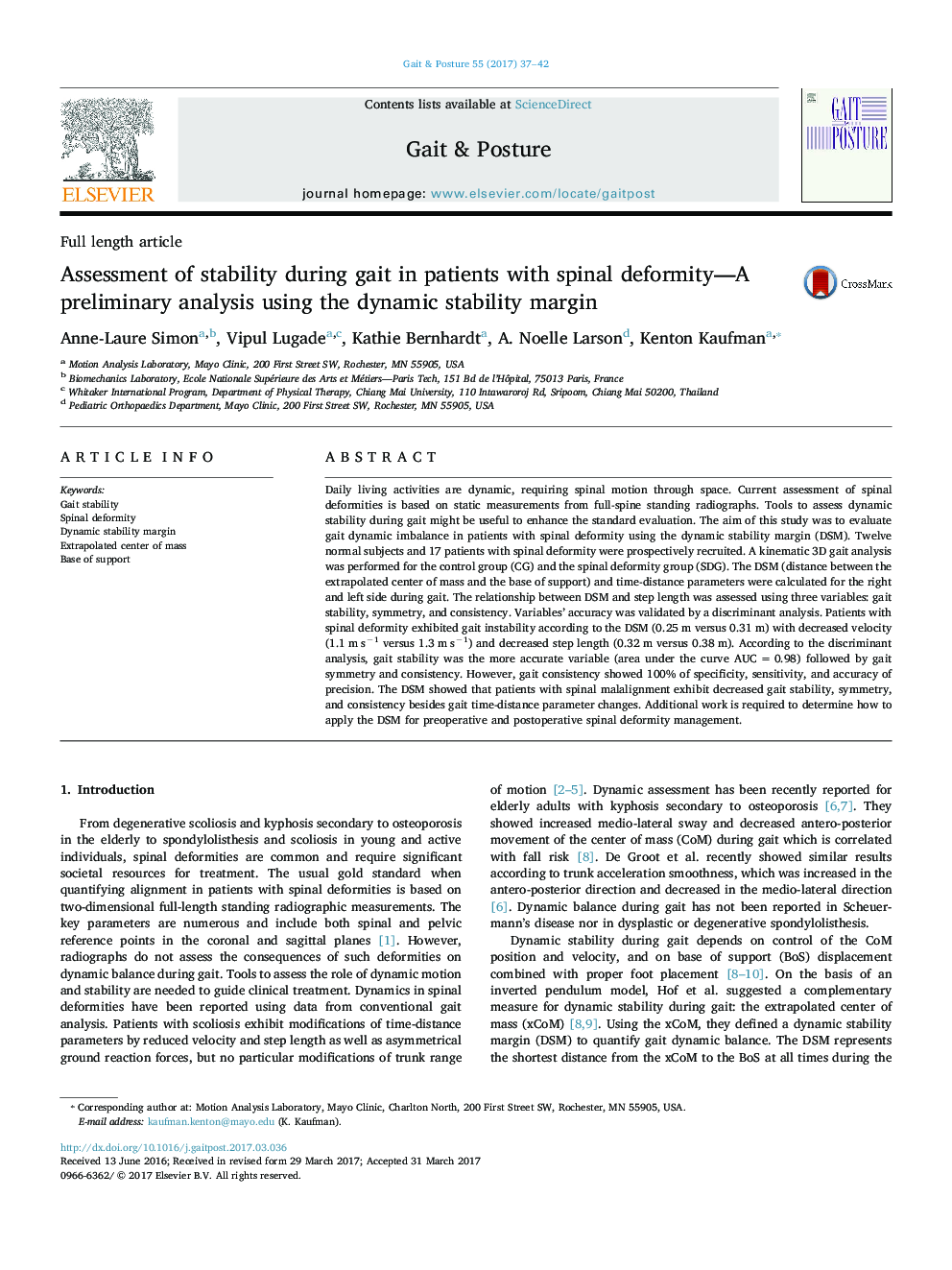| Article ID | Journal | Published Year | Pages | File Type |
|---|---|---|---|---|
| 5707857 | Gait & Posture | 2017 | 6 Pages |
Abstract
Daily living activities are dynamic, requiring spinal motion through space. Current assessment of spinal deformities is based on static measurements from full-spine standing radiographs. Tools to assess dynamic stability during gait might be useful to enhance the standard evaluation. The aim of this study was to evaluate gait dynamic imbalance in patients with spinal deformity using the dynamic stability margin (DSM). Twelve normal subjects and 17 patients with spinal deformity were prospectively recruited. A kinematic 3D gait analysis was performed for the control group (CG) and the spinal deformity group (SDG). The DSM (distance between the extrapolated center of mass and the base of support) and time-distance parameters were calculated for the right and left side during gait. The relationship between DSM and step length was assessed using three variables: gait stability, symmetry, and consistency. Variables' accuracy was validated by a discriminant analysis. Patients with spinal deformity exhibited gait instability according to the DSM (0.25 m versus 0.31 m) with decreased velocity (1.1 m sâ1 versus 1.3 m sâ1) and decreased step length (0.32 m versus 0.38 m). According to the discriminant analysis, gait stability was the more accurate variable (area under the curve AUC = 0.98) followed by gait symmetry and consistency. However, gait consistency showed 100% of specificity, sensitivity, and accuracy of precision. The DSM showed that patients with spinal malalignment exhibit decreased gait stability, symmetry, and consistency besides gait time-distance parameter changes. Additional work is required to determine how to apply the DSM for preoperative and postoperative spinal deformity management.
Related Topics
Health Sciences
Medicine and Dentistry
Orthopedics, Sports Medicine and Rehabilitation
Authors
Anne-Laure Simon, Vipul Lugade, Kathie Bernhardt, A. Noelle Larson, Kenton Kaufman,
